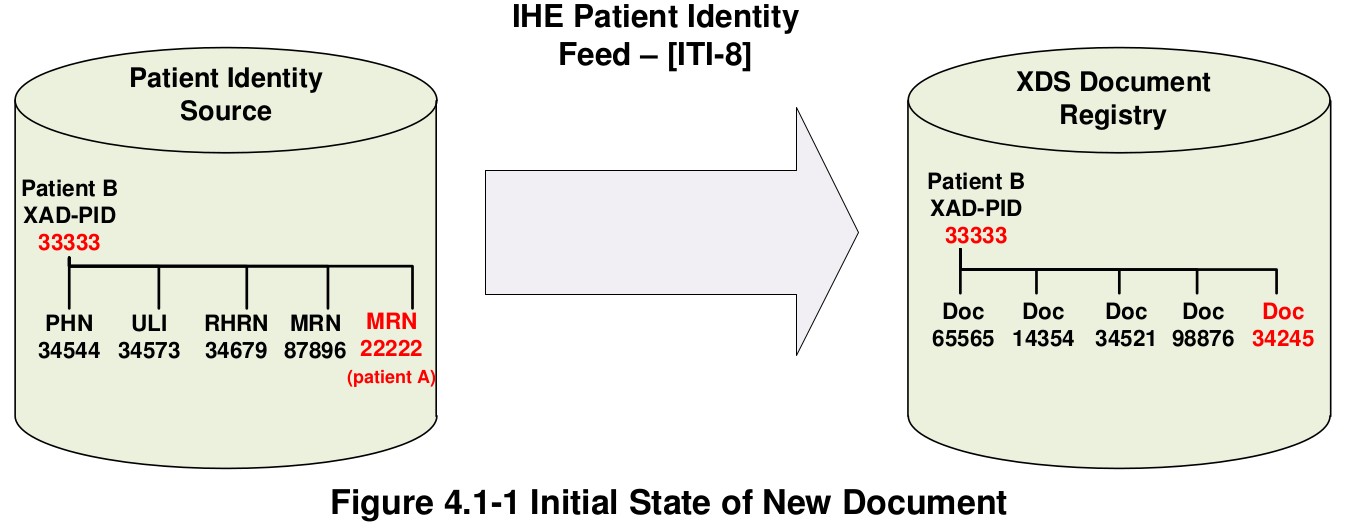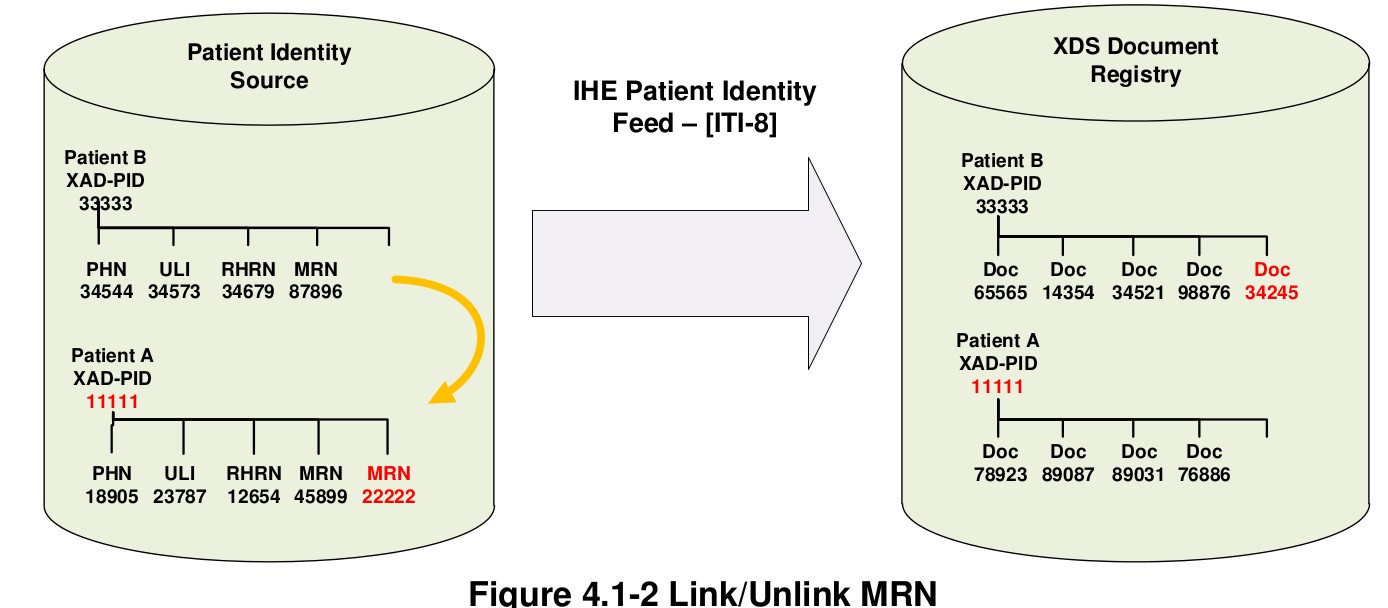Identifier Change Notification
Identifier Change Notification
Description of the Problem
Clinical data associated with a patient are stored in the document repository of the Electronic Health Record (EHR) system in association with the identifier of the patient to which the clinical data belongs to. Since patients will have multiple identifiers assigned to them from various assigning authorities, the assumption is that the clinical data repository will use one specific identifier domain in selecting which identifier will be used in maintaining the association between the clinical data and the patient to which the clinical data belongs to. Typically, a global identifier is assigned to each patient by the EMPI and that identifier is used in storing documents within the clinical data repository. Using the terminology of the IHE organization, the identifier domain used in storing clinical data is referred to as the XDS Affinity Domain. Here is an example below from the IHE XDS specifications.
In this example, the patient has five different identifiers assigned to her shown on the left. The patient is known at different clinical settings by the identifiers PHN-34544, ULI-34573, RHRN-34679, MRN-87896, and MRN-2222 (in the example we are making the assumption that the identifier domain is specified by the prefix of the identifier and the actual identifier is the numeric sequence after the dash. For example, the patient is assigned, among other identifiers, the medical record number 22222 in identifier domain MRN). The EMPI has decided to link the individual patient identity records together and has assigned to the patient the global identifier XAD-PID-33333. XAD-PID in the example is the selected identifier domain (XDS Affiity Domain) for the patient. The right side the figure shows the current state of the clinical data repository where the patient has five documents associated with her record. The entries in red identify the most recent transaction for the patient. In this transaction, a new document was created for the patient at a clinical setting where the patient is known by the local identifier MRN-22222. The document created is identified by Doc-34245. Before the POC system registers the new document for the patient, it first queries the EMPI to identity the global identifier associated with the local identifier of MRN-22222 and the EMPI returns the global identifier as XAD-PID-33333. The POC system then registers the new document using the global identifier of XAD-PID-33333. It is important to note here that the clinical document repository must also maintain the association between the clinical document and the local identifier with which the document is associated with. Within the XDS framework this information is maintained using the source patient identifier field.
At some later point,either through an update of the patient's demographics or after the error was detected at the originating site, the EMPI determines that patient with ID MRN-22222 should not had been linked with the identifier XAD-PID-33333 but with the collection or records that have a global identifier of XAD-PID-11111. The correction is made on the MPI and the associations are corrected appropriately. The problem that results though is that the clinical data repository is now out of synch with the EMPI in associating the clinical document with the correct patient. In the running example the document Doc-34245 that is currently associated with XAD-PID 33333 should be moved to be now associated with the correct global patient identifier of XAD-PID-11111.
To correct the problem the EMPI must provide a mechanism that makes it possible for the clinical data repository to receive notifications when such changes take place so that the two systems can remain in synch with one another.

